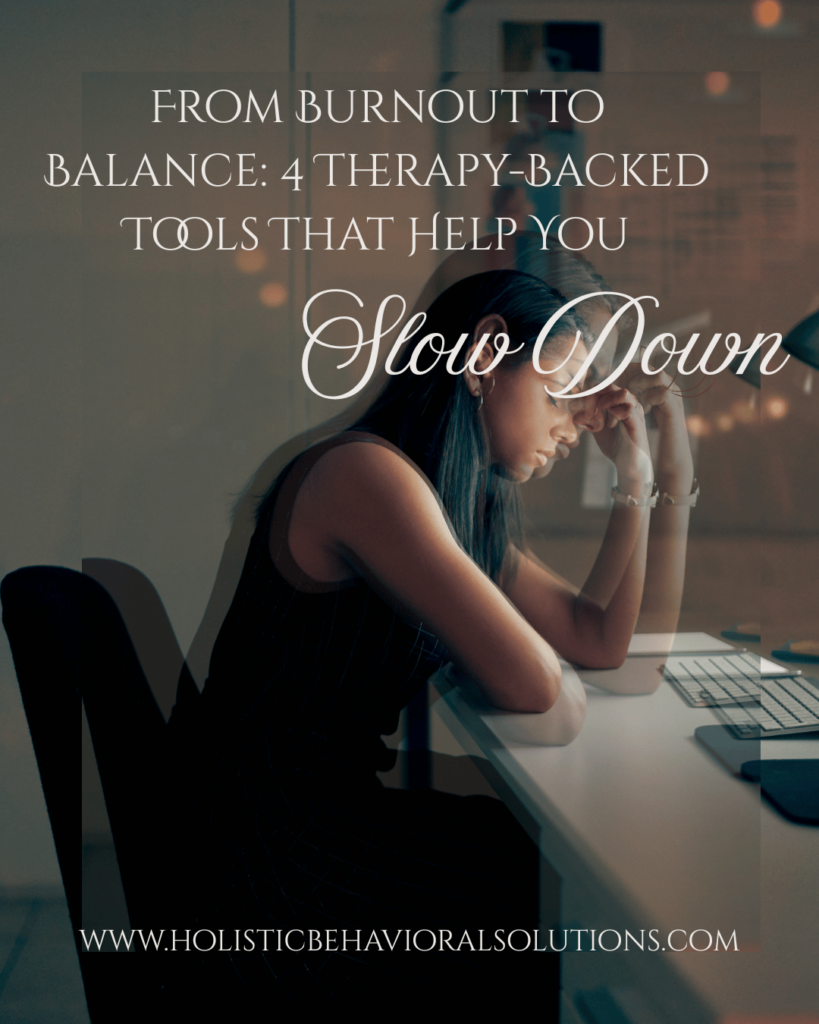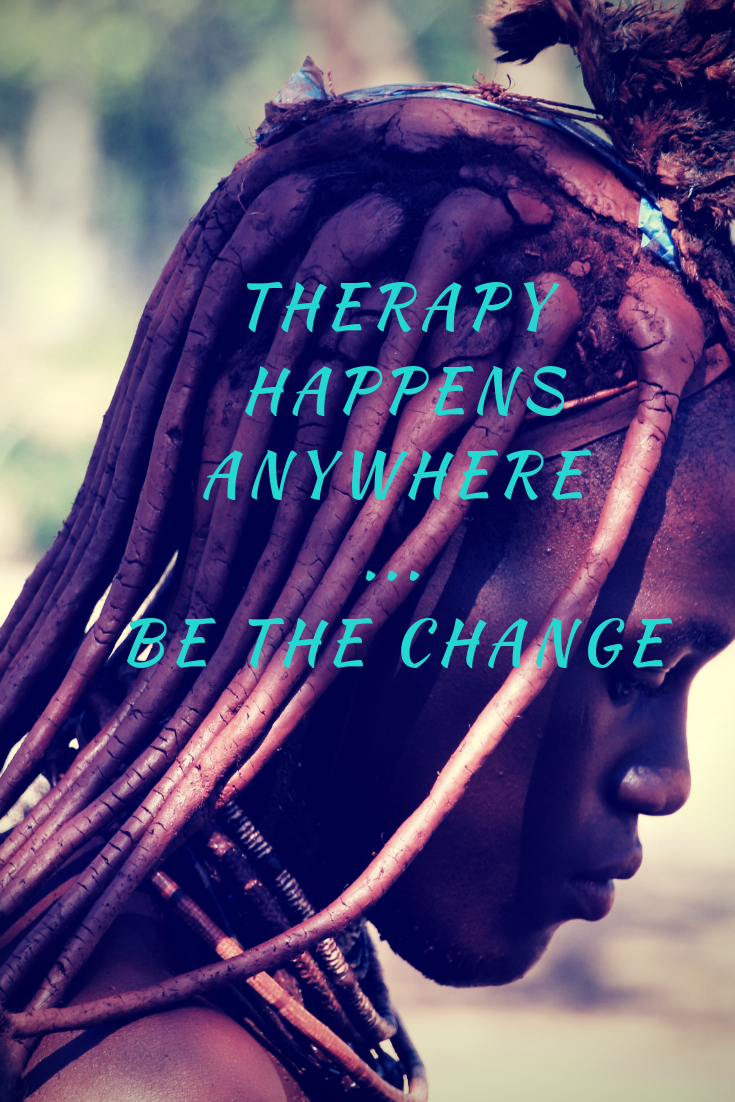
Therapy tools for burnout: When you’re overwhelmed, stressed, or simply moving too fast, it’s not always about doing less—it’s about doing more of what supports your emotional health. That’s where therapy tools come in.
In this post, we’re diving into four sustainable mental health habits, rooted in therapy, that help you create meaningful change—without burning out. These tools don’t require perfection or hours of your time. They’re small, repeatable practices that help you slow down, reconnect, and realign with what matters most.
1. Mindfulness: Reconnecting With the Present Moment
Mindfulness is the cornerstone of emotional awareness. It’s the practice of bringing your attention to the here and now—without judgment.
In therapy, mindfulness helps clients become aware of their thoughts and feelings without being overwhelmed by them. It’s also clinically proven to:
- Lower stress and anxiety
- Improve focus
- Strengthen emotion regulation
- Reduce burnout and reactivity
Try this:
- Pause for 30 seconds.
- Name 3 things you see, 2 things you hear, and 1 thing you feel.
- Breathe deeply and return to your body.
This small act can reset your nervous system and bring you back to the present.
2. Visualization: Mentally Rehearsing Calm and Clarity
Visualization (also called guided imagery) is a therapy technique that uses your imagination to create mental rehearsal for success or peace. The brain responds to imagined experiences as if they’re real—so when you visualize calm, your body begins to feel calm.
Use visualization to:
- Reduce anxiety before stressful events
- Picture yourself responding to triggers with calm
- Envision a peaceful, safe place to self-soothe
Try this:
- Close your eyes and imagine a space where you feel grounded and safe.
- Notice the colors, sounds, temperature.
- Stay there for 2–3 minutes, breathing slowly.
3. Setting Goals That Align with Your Intention
Once you’ve set your intention (see Post #2!), it’s time to translate it into small, clear actions. Goals give you structure—but in therapy, we keep them realistic, flexible, and value-based.
Instead of setting goals from pressure (“I should be doing more”), we set them from purpose (“What small step moves me toward how I want to feel?”).
Try this:
- Break your intention into weekly or daily goals.
Example: Intention – “I want to feel more grounded.”
Goal – “Take 10 minutes each morning without screens.” - Keep it simple and celebrate small wins.
4. Reevaluating Your Routine and Boundaries
A packed schedule isn’t always productive—it’s often a sign of leaky boundaries. Therapy helps you identify which parts of your routine are serving your wellness—and which are draining you.
Ask yourself:
- What activities nourish me?
- What drains me or leaves me feeling resentful?
- Where can I say no or adjust expectations?
Then:
- Add in buffer time between commitments
- Designate screen-free hours
- Revisit your routine weekly or monthly with a gentle lens
When your day-to-day life reflects your values and supports your energy, you’re no longer reacting—you’re living with intention.
Small Habits, Big Shifts
The tools above aren’t about perfection. They’re about consistency, self-awareness, and sustainability. Practiced daily—or even a few times a week—they begin to rewire your nervous system and rebuild your relationship with time, energy, and yourself.
Looking Ahead
In the final post of this series, we’ll explore the role of insight and self-reflection in therapy—how understanding your patterns helps you grow with purpose and grace.
Until then, pick one of the therapy tools for burnout above and try it today. Start small. Start simple. But start.
Support Your Wellness Practice
Looking for calming aids, grounding tools, or supplements to support your daily routine? Visit The Holistic Store for mind-body wellness products that help you feel steady, supported, and in sync with your goals.

